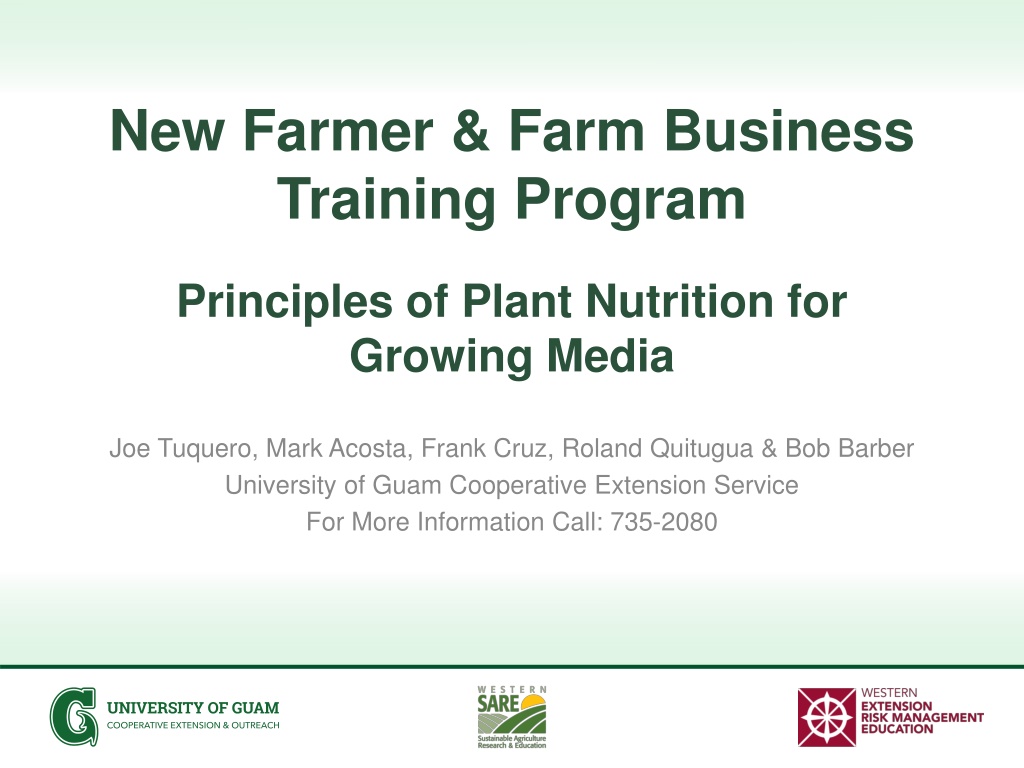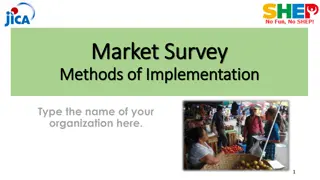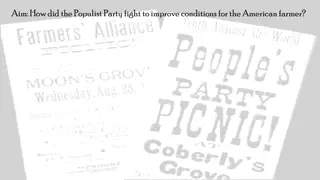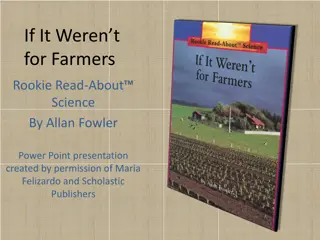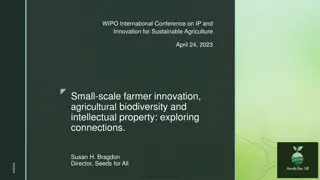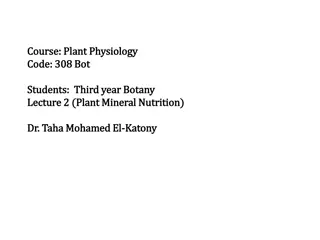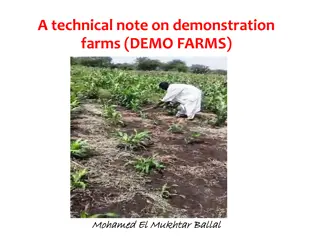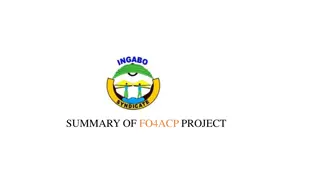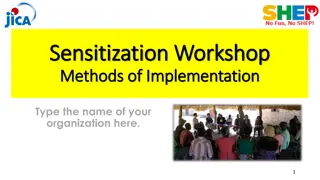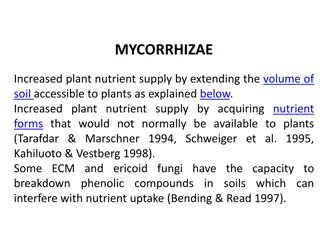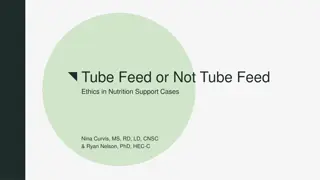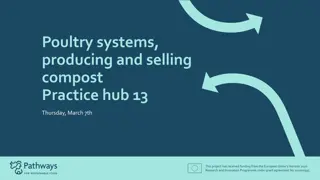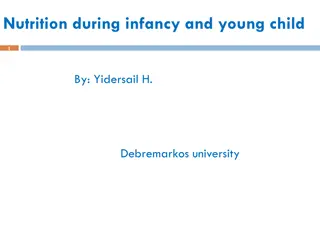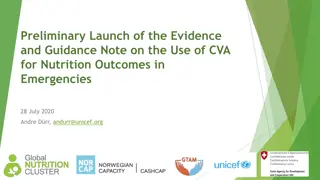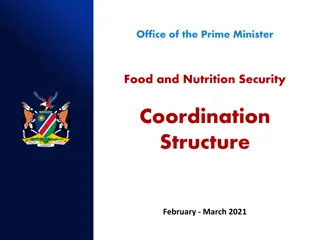Essential Principles of Plant Nutrition for New Farmers
Gain insights on the basic components of soil, essential soil-based plant nutrients, Liebig's Law of the Minimum Nutrient Balance, and modern nutrient management practices. Learn the importance of feeding the soil to ensure optimal plant growth and productivity in farming business training programs.
Download Presentation

Please find below an Image/Link to download the presentation.
The content on the website is provided AS IS for your information and personal use only. It may not be sold, licensed, or shared on other websites without obtaining consent from the author. Download presentation by click this link. If you encounter any issues during the download, it is possible that the publisher has removed the file from their server.
E N D
Presentation Transcript
New Farmer & Farm Business Training Program Principles of Plant Nutrition for Growing Media Joe Tuquero, Mark Acosta, Frank Cruz, Roland Quitugua & Bob Barber University of Guam Cooperative Extension Service For More Information Call: 735-2080
Basic Soil Components 25% Air 25% Water 40-45% Minerals 5-10% Organic Matter (OM) Includes all the living things in the soil Can be much higher in soil mixes Today we want to do a basic overview of plant nutrients and components of soil mixes.
13 Essential Soil Based Plant Nutrients Primary - Macronutrients: Nitrogen (N) Phosphorus (P) Potassium (K) %N %P2O5 %K2O
13 Essential Soil Based Plant Nutrients (cont.) Secondary - Macronutrients: Calcium (Ca) Magnesium (Mg) Sulfur (S)
13 Essential Soil Based Plant Nutrients (cont.) Micronutrients: Copper (Cu) Boron (B) Iron (Fe) Chloride (Cl) Manganese (Mn) Molybdenum (Mo) Zinc (Zn)
Liebigs Law of the Minimum Nutrient Balance "The availability of the most abundant nutrient in the soil is only as good as the availability of the least abundant nutrient in the soil."
Do not feed your plant! Feed the soil, and the soil will take care of your plants!
Old School Nutrient Management Fertilize heavily with commercial fertilizer infrequently to save on labor Heavy Commercial Fertilizer: Prone to leaching, Run-off Burn plants (many are salt based) It is better to apply smaller amounts of fertilizer frequently.
New School Nutrient Management Develop Healthy Soil Organic Matter Sources: Increases water and nutrient holding capacity Increases soil tilth/quality Increases soil organism activity (indicates healthy soil) Releases nutrients slowly as it breaks down
Sources of Plant Nutrients Inorganic Sources 16-16-16, or 0-46-0, Miracle Grow, or mined minerals Organic Sources Stimulates microbial activity, nutrients released over time Organic Mulch Compost Manure: Cow, Poultry or Earthworm castings Coffee Grounds and Kitchen Wastes
Sources of Organic Plant Nutrients Fish meal Fish emulsion Bone meal Blood meal Wood ash: raises soil pH Seaweed: washed to remove salt
Locally Available Ingredients & Home Grown Potting Soils Some Possible Media Components Include: Organic Components: Coconut Coir, Compost, Sifted Mulch, Peat Moss, Manures & Bark Inorganic Components: Perlite, Vermiculite, River and Manufactured Sand Soil Weed Free including seeds, Pest and Disease Free adds weight to the media Try you own blend of local materials to save money.
